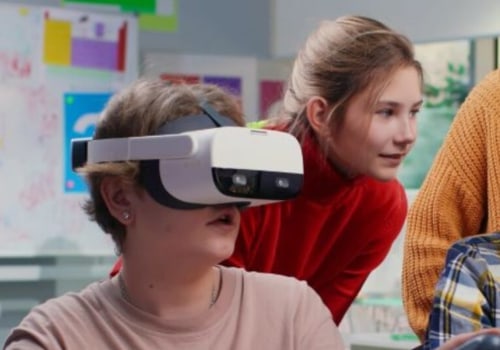Are you interested in taking up animation courses? With the rise of technology and its widespread applications in the world of art, animation is becoming increasingly popular. If you're looking to explore the world of animation, then you've come to the right place. In this comprehensive overview, we'll take a look at the different types of animation courses available online today. From beginner-level tutorials to advanced techniques, we'll cover everything you need to know to get started.
We'll discuss the basics of animation, such as storytelling and character design, as well as more advanced topics such as 3D modeling, rigging, and motion graphics. For those looking for extra help, Spires online GRE tutors are available to provide personalized guidance and support. We'll also explore the various tools and software used by professionals in the industry. By the end of this overview, you should have a good understanding of the different types of animation courses available online and be able to make an informed decision about which one is best for you.
Getting Started With an Animation Course
Starting an animation course can be an exciting but daunting prospect. Fortunately, there are many resources available to help you get started.A good first step is to set up a workspace that is comfortable and conducive to learning. Depending on the course, you may need certain materials such as a drawing tablet or animation software. It's important to read the course requirements before you begin to make sure you have everything you need. Your workspace should be comfortable and distraction-free. Ensure that it is well-lit and that you have the proper hardware, such as a laptop or desktop computer, for the course.
You may also need additional items such as a drawing tablet and animation software. Before you begin, make sure to read the course requirements to find out which materials are necessary. Animation software can vary depending on the type of course you are taking. Popular software includes Adobe Creative Suite, Maya, Blender, and Autodesk 3ds Max. Once you have the necessary materials, it's time to begin your course!
Benefits of Taking an Animation Course
Animation courses can provide a number of benefits to those looking to develop their animation skills.With the right course, students can learn how to create stunning visuals and animations that can be used in a variety of contexts. Additionally, they can also learn the fundamentals of storyboarding, 3D modeling, and other animation techniques. Some of the key benefits of taking an animation course include developing a strong foundation in the principles of animation, such as timing and composition, as well as gaining experience with the latest software and tools used in the field. Additionally, courses can provide students with an understanding of the creative process behind animating for film, television, and video games. Students who complete an animation course will also gain valuable skills in areas such as problem solving, collaboration, communication, and project management.
These skills can be invaluable in any creative field and can help students stand out from the competition when applying for jobs or internships. Finally, taking an animation course can provide students with an opportunity to network with industry professionals and build relationships that could lead to future opportunities. By taking an animation course, students can gain access to resources and mentors who can help guide them in their career.
How to Choose the Right Course for You
Animation Courses: Choosing the right course for you is an important decision that should not be taken lightly. It can be difficult to determine which animation course will best suit your needs, but there are several factors that can help you make the right choice. First, consider the type of animation you want to learn.Are you interested in 2D animation, 3D animation, or a combination of both? Each type of animation has its own unique set of techniques and tools that must be mastered, so it's important to choose a course that focuses on the type of animation you are interested in. Next, think about your skill level. If you are a beginner, look for courses that provide an introduction to basic animation concepts and techniques. If you are more advanced, seek out courses that cover topics like character design, rigging, lighting, and compositing.
Finally, research instructors and mentors who have the knowledge and experience to guide you through the learning process. Look for courses taught by experienced professionals who can provide valuable feedback and support. Check out online reviews and testimonials to get a better idea of who would be the best fit for your learning goals. By taking the time to research and find the right course for you, you can ensure that you get the most out of your animation studies.
With careful consideration and a bit of research, you will be able to find an animation course that fits your needs and helps you achieve your goals.
Types of Animation Courses
Animation courses are varied and can span a broad range of topics. From animation fundamentals and 2D animation to 3D animation and motion graphics, there is something for everyone. Here, we will go through the different types of animation courses that are available online.2D Animation Courses
2D animation courses focus on the traditional techniques of hand-drawn animation. This type of course covers the basics of 2D animation, such as sketching, character design, and understanding the principles of motion.Students learn the fundamentals of animating characters and props using traditional techniques such as cel animation, flash animation, and rotoscoping.
3D Animation Courses
3D animation courses cover the principles of 3D animation, such as modeling, rigging, texturing, lighting, and compositing. These courses often focus on the use of 3D software such as Autodesk Maya, Blender, and CINEMA 4D. Students learn the fundamentals of 3D animation, from creating 3D assets to animating them in a 3D environment.Motion Graphics Courses
Motion graphics courses cover the principles of motion design. This type of course focuses on the use of motion graphics software such as Adobe After Effects and Cinema 4D to create animated videos and motion graphics.Students learn the fundamentals of motion design, from creating assets to animating them in a 3D or 2D environment.
VFX Courses
VFX courses cover the principles of visual effects. This type of course focuses on the use of VFX software such as Adobe After Effects and Nuke to create realistic effects such as fire, smoke, water, and explosions. Students learn the fundamentals of VFX, from creating assets to animating them in a 3D or 2D environment. In conclusion, taking an animation course can be a great way to develop your skills and learn more about this exciting field. With so many different types of courses available online, there is sure to be one that fits your needs.By following the tips in this article, you should be able to find the perfect course for you and get started on your journey towards becoming a master animator. Whether you’re a beginner or an experienced animator, there are plenty of animation courses to choose from that can help you expand your knowledge and skills in the field. Animation courses can help you learn new techniques, develop your portfolio, and gain valuable insights from industry professionals. Taking an animation course can be a great way to stay on top of industry trends and stay ahead of the competition. With the right course, you’ll have the tools and resources you need to take your animation career to the next level.






